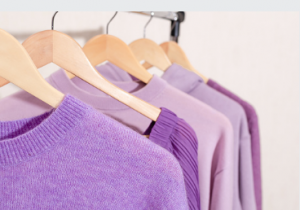When designing and selling women’s clothing, you need to keep a few key elements. These elements include Styles, Fabric, and Market segmentation. In this article, we will take a look at these elements. Ultimately, these elements will determine whether your designs are successful or not. Hopefully, the information above will help you find the perfect women’s clothing design for your brand. We also look at how different market segments affect the quality of your designs.
 Fashion
Fashion
When you visit a clothing store, you’ll often notice a whole section devoted to women’s clothing. The women’s clothing section is generally much larger, with more options than other sections. As a result, navigating the women’s clothing section can be quite challenging. To help you with your shopping experience, you can find a brand directory containing information about the top clothing companies and designers.
Most women wear skirts and dresses, generally considered women’s clothing. But men wear trousers. While once thought to be solely men’s clothing, they are now worn by both sexes. Although women’s clothing is more fashionable, men’s clothes tend to be more functional and suited to various situations. However, men can wear their chests in more public places. Therefore, wearing feminine clothing is considered strange. Check out SaintGarde Veja.
Fabric
The fabric used for women’s clothing can be very diverse. In Europe, the best women’s fabrics are usually created by leading manufacturers. These clothing brands use the finest materials to create the highest quality garments. These materials are famous Italian silk, precious Egyptian cotton, and the finest worsted wool and cashmere. In addition, legendary British and Belgian weavers make some of the world’s most luxurious fabrics.
The price of women’s clothing is largely influenced by the fabric used. Silk is the most expensive fabric, while cotton is the least expensive. While silk blends make for luxurious women’s garments, it is important to note that these fabrics are not necessarily the best for everyone. Each person has a personal preference for the fabric used. The fabric choice is largely a personal choice and should be based on your taste, location, and current season. Check out SaintGarde Veja.
Market segmentation
A report covering the Women’s clothing market provides valuable data on different segments. The report includes various key elements that help understand the market, including regional and country-level assessments, competitive landscape, and company market share analysis. Additionally, it contains company outlines and product descriptions and contact information. Additionally, it provides information on the upstream and downstream demand for the industry. The report will help you make strategic decisions and better understand the current and future market.
Styles
Throughout history, there have been many different styles of women’s clothing. Today, there are countless combinations of items, each one representing a different personality. While some styles are more conservative than others, they all have something in common: they represent an individual’s style. No matter your style, you can find the perfect outfit to suit you! Just follow these tips to find the perfect wardrobe for you! Then, read on to learn more about the different styles of women’s clothing!
The loose, baggy clothing style first became popular in the 1920s, when women began to reject their corsets and embrace their bodies. As a result, loose, sleeveless tops and short skirts became incredibly popular. As a result, this style is now synonymous with western women. Similarly, the romantic style is reminiscent of pioneer women’s clothing with puffy sleeves and high necklines. In addition, romantic-style dresses are usually made from light, subtly floral fabrics. Combined with lace-up boots, this style is an excellent example of femininity.
Colours
When choosing the colours for your clothing, it is essential to keep in mind the basic principles of colour science. Colours for women’s clothes are not pure works of plastic art but rather reflect a particularity of the clothing and the image of the human body. For this reason, women’s clothing colour design must be unique and distinct from other types of clothing. Since all kinds of clothing are attached to the fabric, they change their colour from a two-dimensional plane to a three-dimensional plane.